
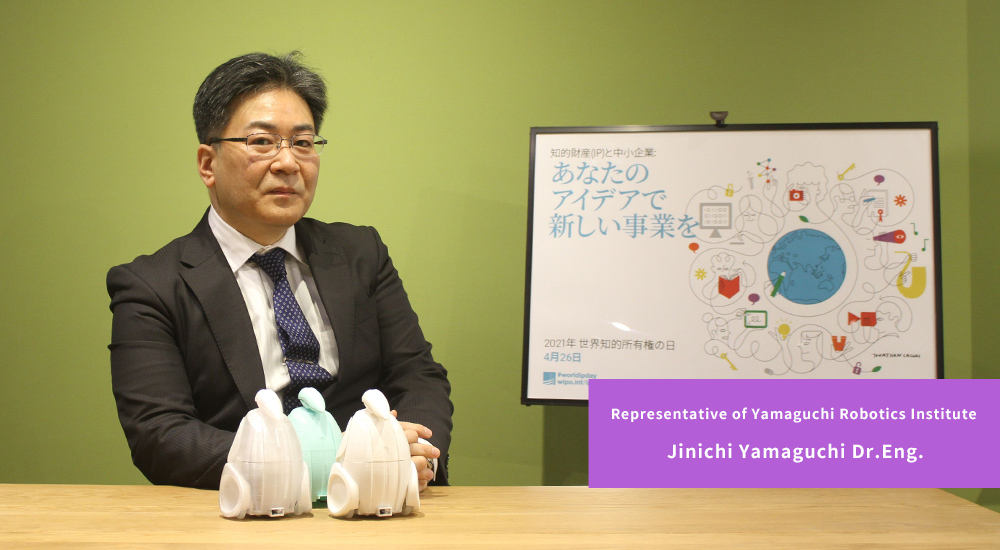
My first encounter with robot technology was in my first few years of elementary school and it gave me a huge impact. In an encyclopedia I promised to pay from my allowance every month, there was an illustration showing that body modification by robot technology will be a trend in the future.
My actual encounter with advanced robot technology was at Tsukuba Science Expo 1985, displaying the robot musician playing a keyboard instrument, the WASUBOT and the biped walking robot WHL-11.
During my tenure at university, due to my Professor at Waseda University, Ichiro Kato’s acquaintance with Mr. Masaru Ibuka, co-founder of Sony, I supervised Sony in research and development of bipedal humanoid robots, and engaged in inventing for the purpose of business development. This opportunity led to combining robot technology research with business. I have learned the importance of intellectual property in business and ways to invent from Technology director and Intellectual Property director at Sony then. On presenting the robot, I suggested giving a demonstration of a robot dancing to the music as I had been taking piano lessons for years and was skillful at representation using music.
While in university, I was indifferent to intellectual property system and had no concerns while writing papers and winning society awards. However, similar robots were released by a company at that time, adopting intellectual property system. The national robot project then made a big shift to utilizing the intellectual property of that company.
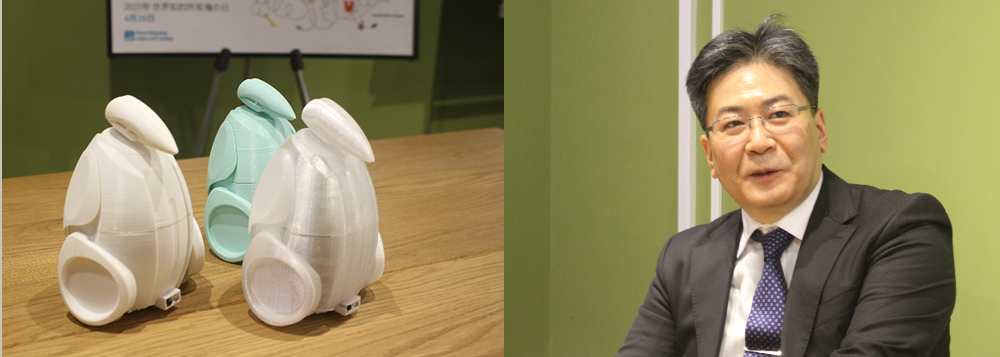
Technology development in robots ultimately aims for practical use. Considering securing our current position and continuing research and development, it is important that we utilize the intellectual property system.
Intellectual System is appreciated by small business owners and individual inventors like myself and is indispensable. However, while supervising at companies, I felt the workers’ incentive for creative work becoming lower than before due to recent amendment of Japanese Patent Law.
I also feel that the development of network technology and small scale manufacturing device such as 3D printer will further make it easier for not only companies but also for individuals working together to operate and do business. Under these circumstances, I believe the intellectual property system will strongly support the operation. I am hoping for even more creative and exciting world to expand by learning and utilizing intellectual property system.
Lastly, I would like to introduce some of my recent research and development.
1 Hino Omotenashi service robot (welcoming robot)
a. Outline including details
On the occasion of three stages of the Sports Festival in Tokyo 2013 (68th National Sports Festival of Japan) being held at Hino city, a project was launched with support from the city to promote “Hino: town of manufacturing” by developing robots in cooperation with several small businesses and university, both within Hino city.
b. Acquired intellectual property rights and its purpose
Considering the cost and duration for rights acquisition, focused on design and trademark
c. Future business development and its direction
Large-sized ones for events held within the city and for a research platform at universities, small-sized ones for Hino city’s elementary schools’ programming education. Considering developing business to the public in the future.
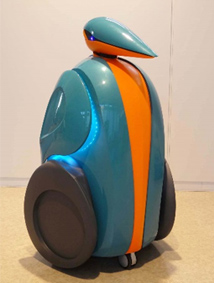
Hino Omotenashi robot :”Pinokkuru” (large-sized version:children’s size)
2 Disaster respond robot:”Ganbappe”
a. Outline including details
Product of Fukushima, developed upon request from companies in Iwaki city, Fukushima. State of development was featured in “Watching Fukushima”, a documentary program by NHK.
b. Acquired intellectual property rights and its purpose
Acquired design, trademark and patent in well balance.
c. Future business development and its direction
Using technology acquired through the development of Ganbappe 1 and 2, we are working on the practical use of force controlled intelligent assisting drive robot: Ganbappe 3. This robot intelligently assists movement in response to the application of force on drive wheels and is used mounted on a wheeled platform. It is easy to operate and is eligible for a program assisting introduction of Fukushima made robots. On developing Ganbappe 1 and 2, they were subsidized by Fukushima prefecture’s Industrial Integration of Disaster Response Robots Subsidy Program and as for Ganbappe 3, by Business that Promote Regional Reconstruction and Commercialization Development.
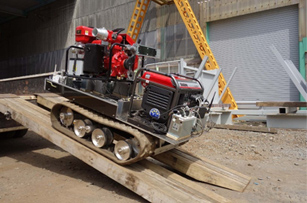
Ganbappe 1(fire pump loading robot:medium sized)
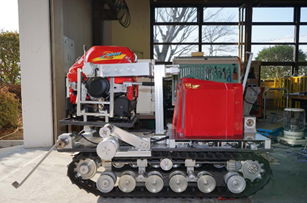
Ganbappe 2(fire pump loading robot:large sized)
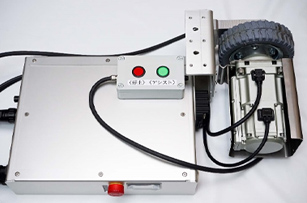
Ganbappe 3 (force controlled intelligent assisting drive robot unit)
3 Bunraku (Japanese traditional puppet show) robot
a. Outline including details
A robot developed to convert technology of beauty such as Japanese traditional art, pictures, animation into robot technology. In collaboration with Osaka University of Arts as a representative, Tokyo University of Marine Science and Technology, University of Tsukuba, Hosei University and many other universities along with companies and individuals cooperated in its development with aid from Grants-in-Aid for Scientific Research. Our Institute was in charge of converting Bunraku puppets’ structure into that of humanoid robots, and a company which I represent was responsible for the robot production.
b. Acquired intellectual property rights and its purpose
Acquired design, trademark and patent in well balance.
c. Future business development and its direction
Although these robots have just begun to come into motion, we are impressed by the quality of its emotional expression. We aim to develop skills while quantitatively evaluating and to utilize Japanese traditional technology for various robots.
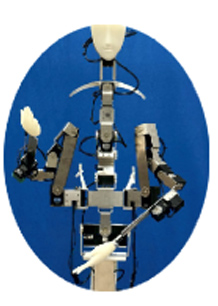
Bunraku Robot(without exterior)it was presented at The 38th annual conference of the Robotics Society of Japan (RSJ).
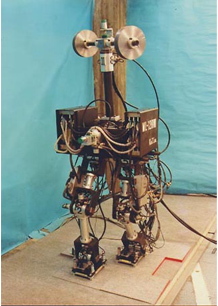
Waseda Leg No.12 (WL-12 )series※1:This robot appeared in NHK TV serial drama “Hanbun, Aoi. (Half Blue Sky)”

Waseda bipedal humanoid robots WABIAN series※2:Flow of technology can be seen in internal structure of Moving Gundam in Yokohama
Dr. Jinichi Yamaguchi Representative of Yamaguchi Robotics Institute
Completed his Ph.D. in mechanical engineering, researching stable dynamic walking in biped walking robots and has won many society awards. Developed robots are the Waseda biped walking robots: Waseda Leg No.12 (WL-12) series※1. Upon finishing graduate school, engaged in leading research and development of bipedal humanoid robots as a research associate/lecturer of the Advanced Research Institute for Science and Engineering at Waseda University. Main works include Waseda bipedal humanoid robots WABIAN series※2. Thereafter worked independently, doing product differentiation and supporting new development centering on technology of dynamic biped walking robots. Also CEO at manufacturing and sales company. Qualified as Intellectual Property Analyst (patent and contents business) certified by Association of Intellectual Property Education and is a Certified Specialist of Intellectual Property Management.